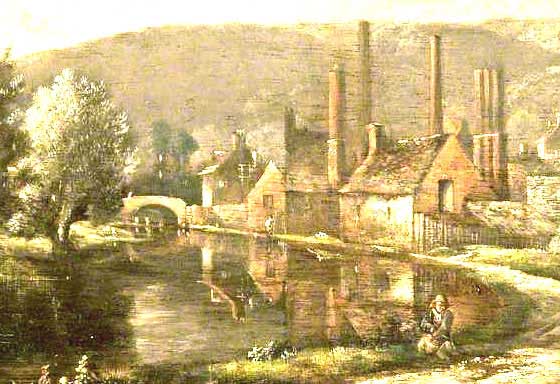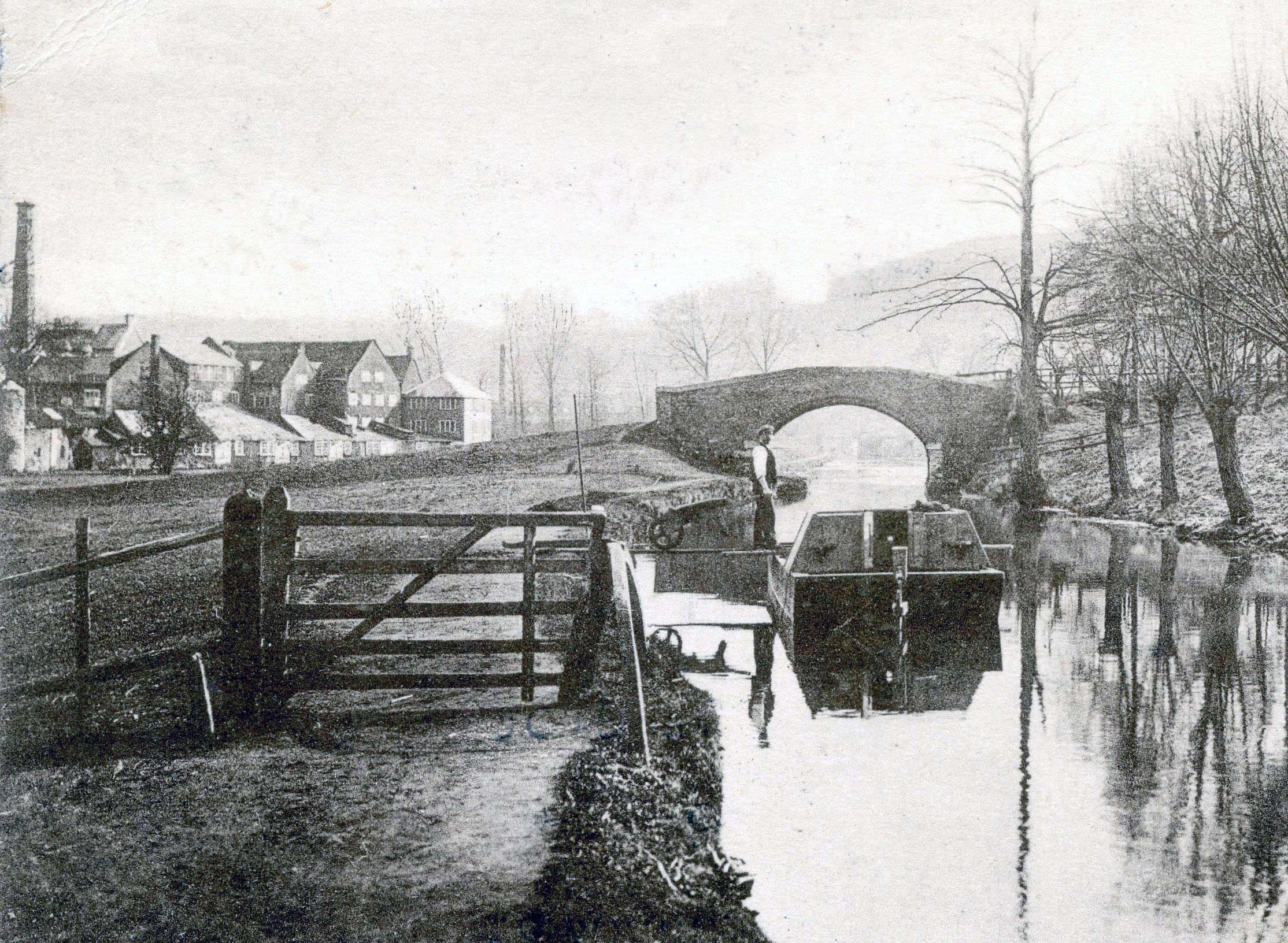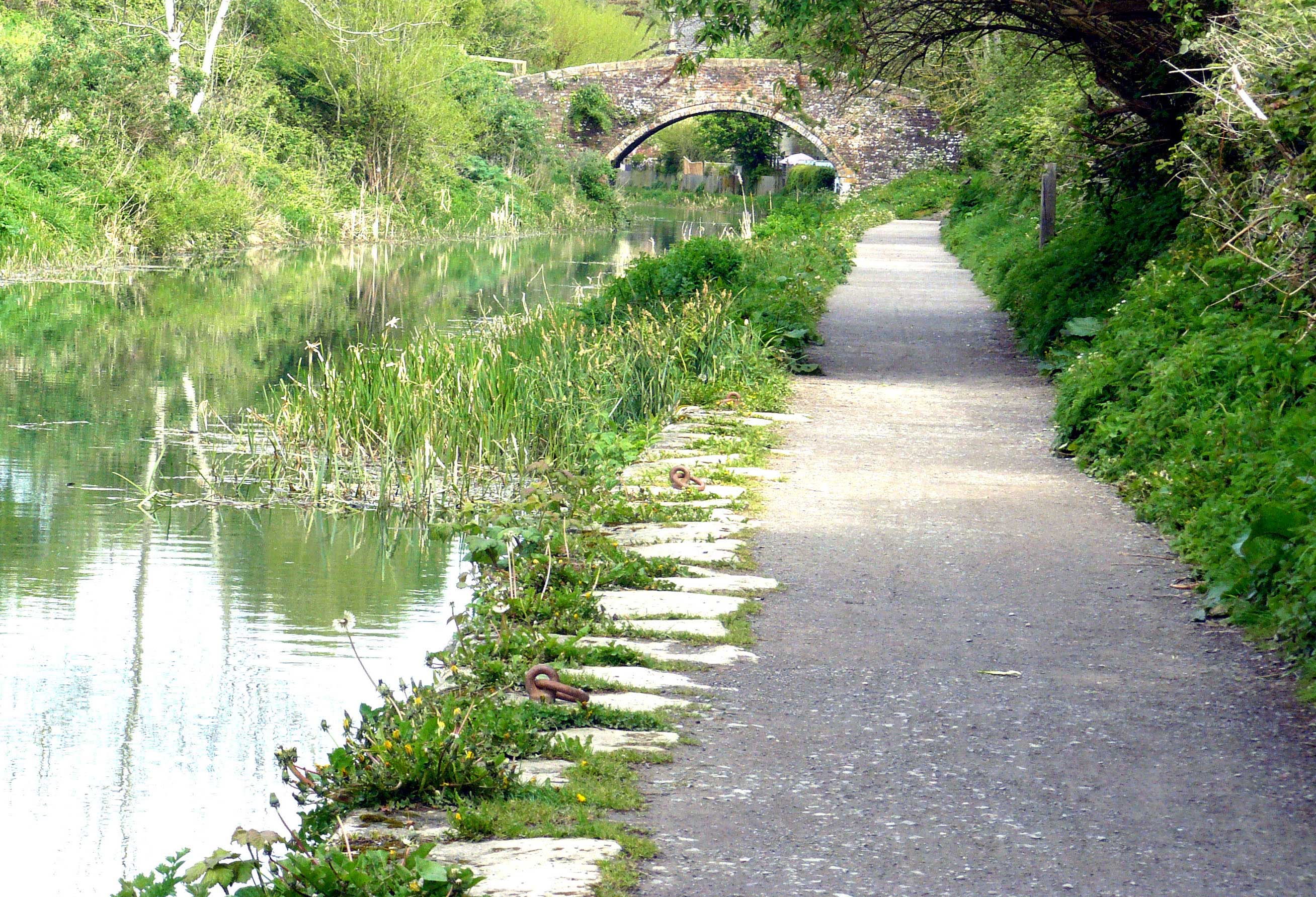Along this part of the Frome valley, each canal bridge carried an ancient track across the valley that was once used by workers accessing the local cloth mill. This section of canal was closed in 1933 and was restored between 2011 and 2018.


Bowbridge Bridge carries a road that climbs up the steep slope of Butterow Hill. Bowbridge Lock adjoins the bridge.
In the nineteenth century, Bowbridge Mill was particularly known for dyeing woollen cloth. Members of the Partridge family managed two sites alongside the canal (above and below the lock), and much coal was delivered for heating the water used in the dyeing process.
The dyeworks continued well into the 1920s, and one stone building adjoining the lock has survived – recently converted for housing.


This bridge takes its name from the family that made woollen cloth at Stafford Mill (seen in the background) throughout most of the nineteenth century. The mill takes its name from an ancient stone ford across the River Frome.
Towpath gates were needed at field boundaries to prevent stock straying wherever the towpath was open to the neighbouring field. Each gate had a weight on a rope to make it self-closing.
The picture also shows a work-boat with a canal maintenance man pulling a wheel-barrow across a plank from the towpath.


Stones in the canal bank south of Stanton’s Bridge mark the wharf used for deliveries of coal to nearby Stafford Mill.
After cloth making ceased in the 1880s, the mill was acquired by S. G. Bailey & Co, a paint and chemical manufacturer. They used the wharf to receive many cargoes of manganese ore that had been imported through Sharpness.
History of the mills from https://www.british-history.ac.uk/vch/glos/vol11/pp119-132.
Plan of dyeworks from 1841 Tithe Apportionment.